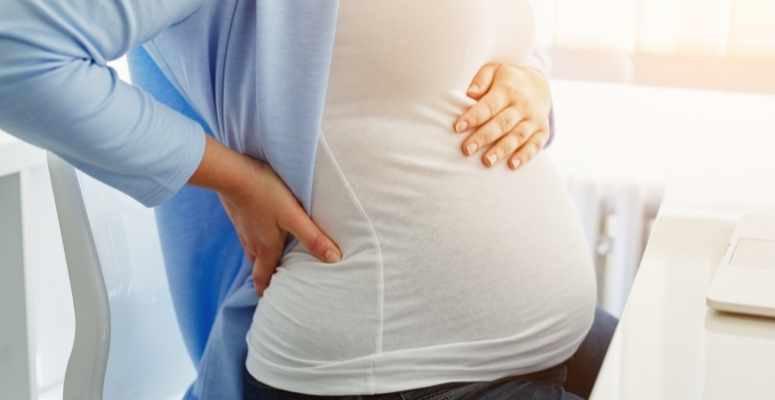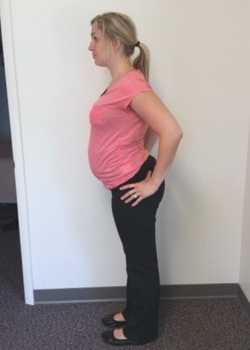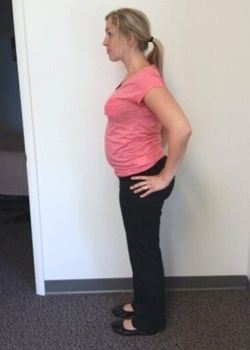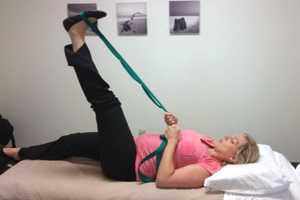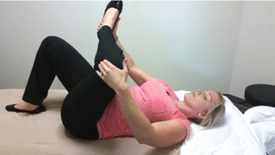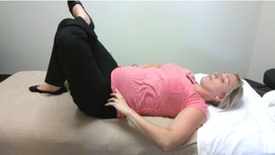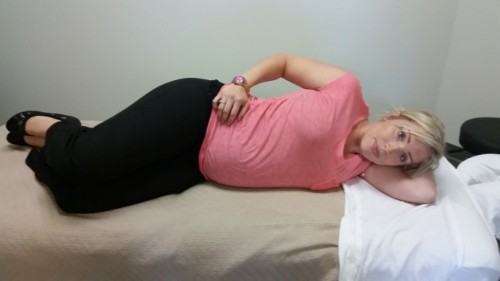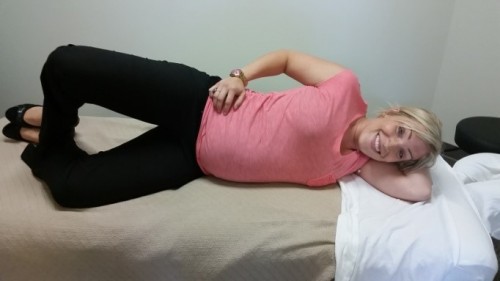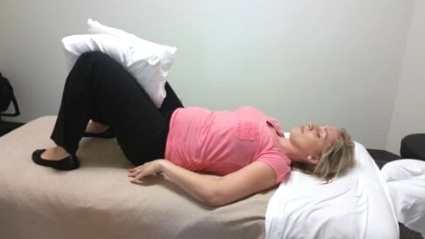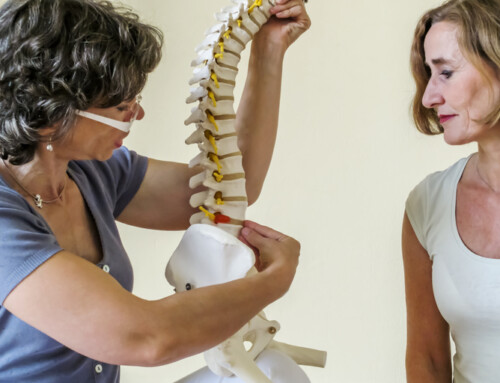Low Back Pain Relief During & After Pregnancy
By Megan Dodge, PT, DPT
Low back pain (LBP) is the most common musculoskeletal complaint during pregnancy that is estimated to affect 45%-75% of women at some point during their pregnancy.1,3,4,5 In addition to women experiencing LBP during pregnancy, about half of women continue to have pain 1 year postpartum.1 Although women who experience LBP during pregnancy and even postpartum is often considered the “norm,” it does not have to be solely self managed. There are ways to address and reduce the pain with physical therapy intervention.
During pregnancy, woman experience the following changes that can lead to LBP:1,4
- Center of gravity shifts to accommodate the growing fetus: Leads to hyperlordosis posturing (see picture below)
- Increased body mass and abdominal muscles weaken: Places a higher strain on low back musculature
- Pelvis shifts more anteriorly placing greater load on sacroiliac (SI) ligaments: Ligaments become lax placing increased strain on low back
- Increased levels of relaxin, progesterone and estrogen: Ligaments and joints become lax placing increased load on low back
There are many safe stretches and gentle strengthening exercises that can be performed to reduce low back pain during pregnancy and postpartum as seen in the pictures below.2 At CAPT, we will provide an extensive evaluation and implement a safe treatment program specific to your needs during and after pregnancy. It is always advised to consult your doctor before beginning any new exercise regimen on your own.
Normal lordosis (on left) vs Hyperlordosis (excessive curvature of lumbar spine, on right):
- Normal lordosis
- Hyperlordosis
Hamstring Stretch/Sciatic Nerve Glides
Using a belt, towel or strap around your foot, raise leg with knee straight until a gentle stretch is felt in the back of your thigh (A). Hold for 30 seconds, repeat 3x on each leg. For an added stretch to the sciatic nerve, slowly point and flex your ankle to gently 10x on each leg (B). Perform 2x/day.
- Hamstring Stretch A
- Hamstring Stretch A
Gluteal Stretch
Cross one leg over opposite thigh (A). Slowly pull your top leg towards your chest as shown until a gentle stretch is felt in the buttock and thigh (B). Hold for 30 seconds, repeat 3x on each leg. Perform 2x/day.
- Gluteal Stretch A
- Gluteal Stretch B
Clam Shells
Lay on your side with your hips stacked on top of one another. Place knees slightly bent as shown (A) with feet together being sure to keep navel gently pulled in (not allowing increased curvature of low back). Raise top leg upward without rotating spine/body then return to starting position (B). Repeat 20x on each side.
- Clam Shell A
- Clam Shell B
Pelvic Tilts with Pillow/Ball Squeeze
Place a small ball or pillow between your knees while lying on your back. Gently press your back flat into the table pulling your navel down toward your spine and squeeze the ball/towel exhaling. Hold for 3-5 seconds then relax and inhale returning to starting position. Repeat 2 sets of 10 repetitions. Be sure that your abdomen is not bulging upward during exercise. .
For more information and treatment options for low back pain or sciatica during pregnancy or postpartum, call 518-289-5242 to make an appointment at any one of their Capital District locations, or contact the therapists at Capital Area Physical Therapy here.
References:
- Casagrande D,Zbigniew Gugala Z, Clark S, Ronald L. “Low back pain and pelvic girdle pain during pregnancy.” Journal of the American Academy of Orthopaedic Surgeons. 9 (Sept. 2015): p539.
- Jeffcoat, Heather. “Top 5 pregnancy exercises for low back pain.”International Journal of Childbirth Education 1 (2011): 9+. Academic OneFile.
- Ozdemir S., Bebis H., Ortabag T., Acikel C. “Evaluation of the efficacy of an exercise program for pregnancy women with low back and pelvic pain: a prospective randomized control trial.” John Wiley and Sons Ltd.
- Sabino J, Grauer JN. Pregnancy and low back pain.Current Reviews in Musculoskeletal Medicine. 2008;1(2):137-141.
- Waterfield, J., Bartlam, B., Bishop, A., Holden, M. A., Barlas, P., & Foster, N. E. (2015). Physical therapists’ views and experiences of pregnancy-related low back pain and the role of acupuncture: Qualitative exploration.Physical Therapy, 95(9), 1234-1243.

